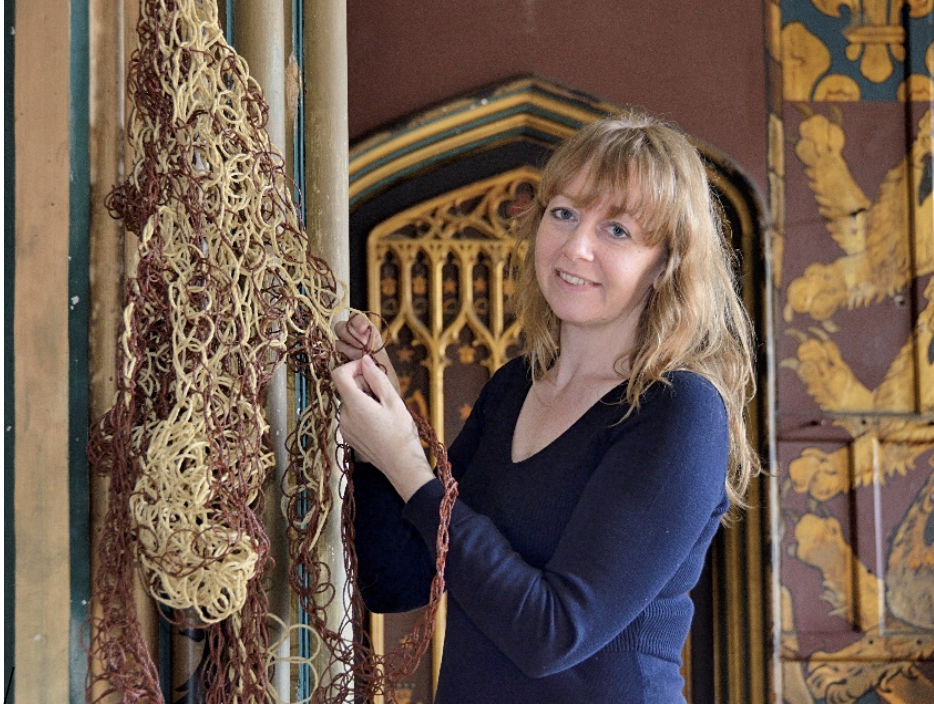

- Contact Us
- Search
-
Mayflower400 partner destinations:
UK artist completes historic Atlantic voyage
Aug 29, 2019
A UK artist and sculptor completed a prestigious residency at a US museum following an epic voyage across the Atlantic, reliving the historic Mayflower crossing of 1620 as part of a project to commemorate the 400th anniversary of the famous crossing.
Rachel Carter completed the crossing on board a cargo ship which left from Liverpool Docks on August 8, 2019 and travelled via Scotland to Halifax CA where she caught a flight to Boston.
While on board the ship she created weavings, kept her own voice journals and read extracts from the diaries of William Bradford written during the original 1620 crossing.
Rachel, from the East Midlands region of England where many of the Pilgrims originated from, has now completed her Artist in Residency at the Pilgrim Monument and Provincetown Museum (PMPM), Massachusetts.
The PMPM is close to the spot where the first Pilgrims set foot in America and Rachel taught more than 350 visitors how to weave their own bracelets and keyrings whilst telling them about her journey and her plans for her Language of Sculpture – Spirit of Mayflower Project, with the creation of a full-sized bronze sculpture of a Pilgrim woman.

Rachel specialises in woven materials and texture, similar to the practices of the Wampanog people who wove belts which often depicted stories or family symbols.
The sculpture, named ‘Pilgrim Woman’, features a Tudor-style dress with a fitted kirtle and full skirt made up of woven panels that Rachel created herself whilst on board the ship and from a series of workshops which will take place with women’s groups based in the Pilgrim Roots areas of the UK which include Nottingham, Lincolnshire and South Yorkshire.
The woven panels were added to the skirt of the Pilgrim Woman, before the entire sculpture was digitally scanned and cast in bronze.

She said: “I wanted to try to understand and experience the feelings that the original Mayflower Pilgrims felt during their 66 day trip in 1620, so travelling to the US by boat, completely cut off from communication was the only way to do this. The journey was such an amazing adventure, we had sunny conditions for just one day, which was when the ship left Liverpool, then rain, wind and rough seas for the remainder of the Atlantic crossing until the very last day, it really makes you wonder how the Mayflower passengers coped on a smaller vessel and without all of the conveniences we have today.”
“Stepping onto dry land after just eight days was extremely liberating and my time in Provincetown and at the museum was fantastic, I have met members of the Wampanoag Tribe and many more people of all ages. As well as creating the woven panels for the final sculpture I have been teaching visitors how to weave using the macramé method.
Sign up for the latest Mayflower 400 news
You'll be the first to hear the latest Mayflower news, events, and more.
Log In
Register
Mayflower 400 Proudly Supported by our National Sponsors and Funding Partners






